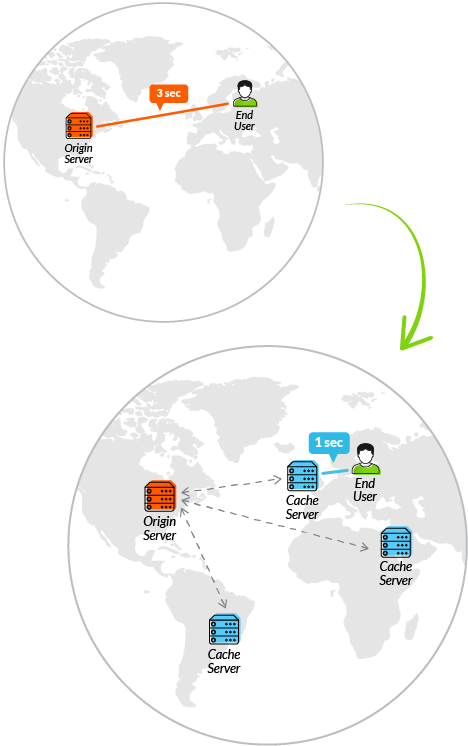It is no secret that a site’s load time impacts its search ranking. Marketers everywhere have stressed page load time and page speed must be considered, and Google has even admitted that page speed does matter. CDNs play a huge part in optimizing page speed and many people aren’t familiar with CDNs or the process in which they can improve page speed.
So, what exactly is a CDN?
Content delivery networks (CDN) are the transparent backbone of the Internet in charge of content delivery. Whether we know it or not, every one of us interacts with CDNs on a daily basis; when reading articles on news sites, shopping online, watching YouTube videos or perusing social media feeds.
No matter what you do, or what type of content you consume, chances are that you’ll find CDNs behind every character of text, every image pixel and every movie frame that gets delivered to your PC and mobile browser.
To understand why CDNs are so widely used, you first need to recognize the issue they’re designed to solve. Known as latency, it’s the annoying delay that occurs from the moment you request to load a web page to the moment its content actually appears onscreen.
That delay interval is affected by a number of factors, many being specific to a given web page. In all cases however, the delay duration is impacted by the physical distance between you and that website’s hosting server. A CDN’s mission is to virtually shorten that physical distance, the goal being to improve site rendering speed and performance.

How a CDN Works
To minimize the distance between the visitors and your website’s server, a CDN stores a cached version of its content in multiple geographical locations (a.k.a., points of presence, or PoPs). Each PoP contains a number of caching servers responsible for content delivery to visitors within its proximity.
In essence, CDN puts your content in many places at once, providing superior coverage to your users. For example, when someone in London accesses your US-hosted website, it is done through a local UK PoP. This is much quicker than having the visitor’s requests, and your responses, travel the full width of the Atlantic and back.
This is how a CDN works in a nutshell. Of course, as we thought we needed an entire guide to explain the inner workings of content delivery networks, the rabbit hole goes deeper.
How do CDNs Help SEO?
CDNs improve the speed and quality of content that is delivered to the user. CDNs should be seen as part of the solution for search ranking as it is applied to page speed and efficient content delivery, but it is not the only thing that needs to be done to increase search ranking. Think of CDNs as a way to improve upon the technical ranking factors for SEO.
For instance, CDNs help to ensure each version of your website across several servers and locations are identical. CDNs use caching algorithms and canonical headers to help enhance SEO of your website by combatting duplicate content creation issues. Remember, as CDNs purge content so the most recent and relevant content loads first, they must do this across every cached version of a site.
If you need assistance with technical SEO or optimizing your current site, contact us. We are here to help.
